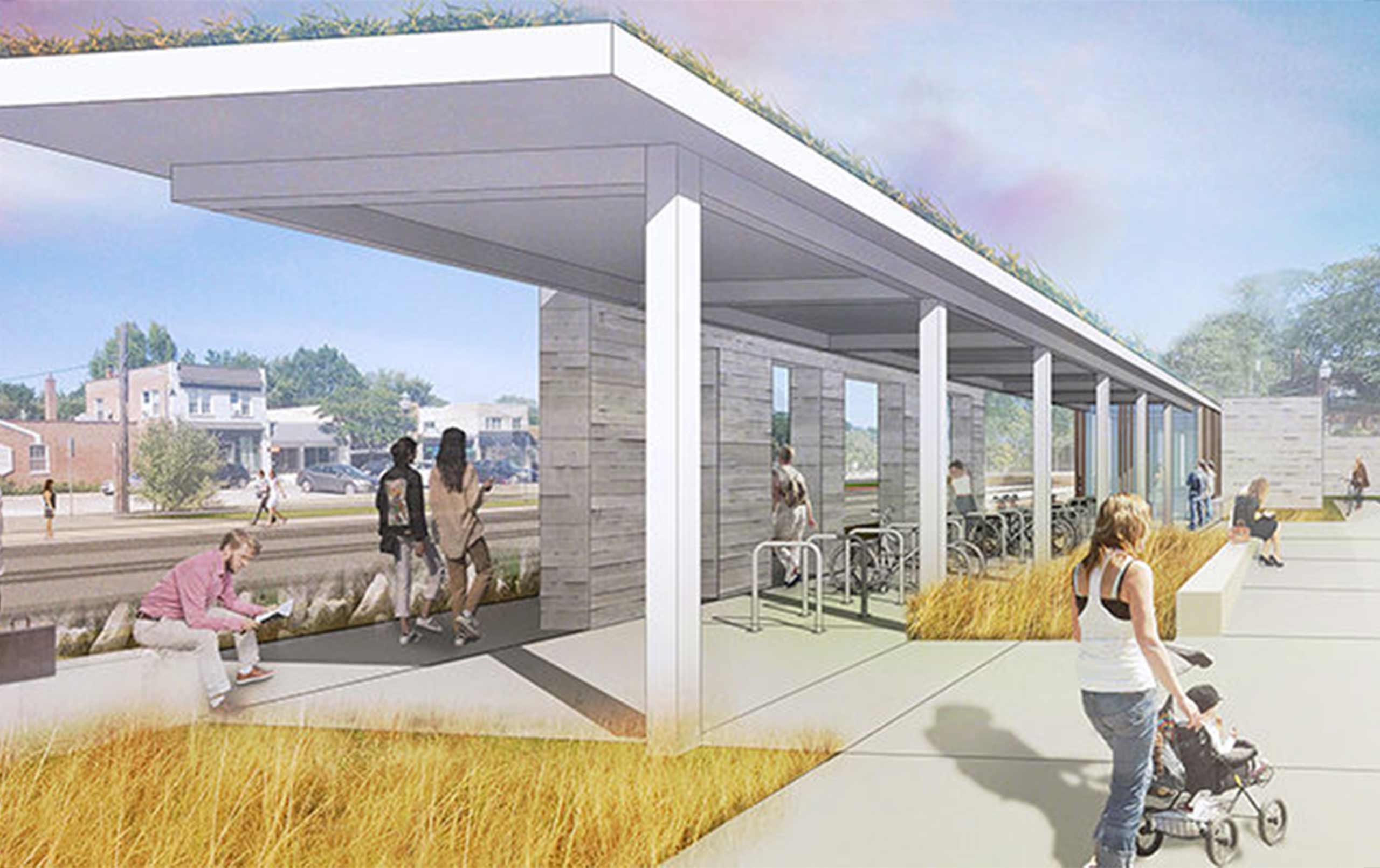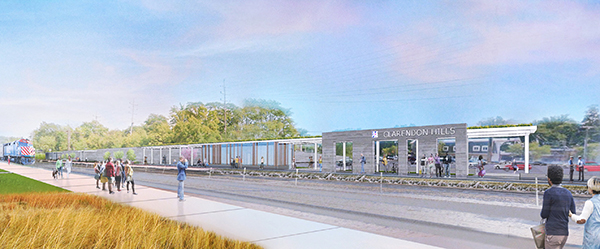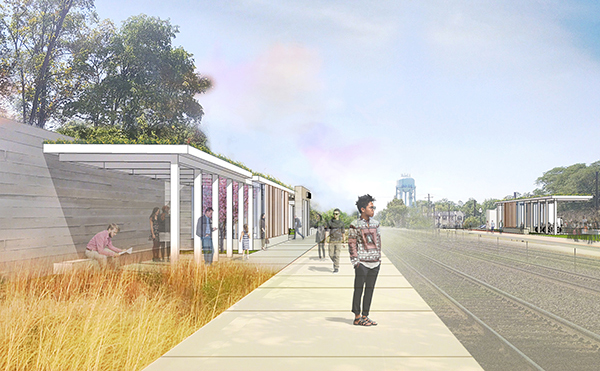
Design of Clarendon Hills train station emphasizes landscape and sets the tone for enhanced safety and community development
Over the last 25 years, Clarendon Hills has undergone a renaissance: housing has shifted from post-war to modern, and new shops and restaurants have sprung up in the village’s vibrant downtown. Demographic research firm Niche named Clarendon Hills #1 Best Place to Live in Illinois and #3 Best Place to Live in America in 2018.
However, when people approach the community via Metra’s BNSF Railway line, they get their first impression from a tiny, outdated train station. Village President Len Austin called the 1970s-era station “an out-of-date facility no longer meeting the needs of the village’s residents and business community.”
The village plans to tear down the old station later this year. In its place will rise a cost-conscious station that offers more openness and amenities, improves safety, and better integrates with the surrounding landscape. The new station, designed by Legat Architects, includes canopies, enclosed waiting, and covered bike shelters. Additionally, the station’s parallel alignment to the tracks means much better views to approaching trains.
This fall, the village will also kick off streetscape improvements that formalize lanes for vehicle traffic, create a shared vehicle/bike lane, and reduce the distance pedestrians must walk to cross the street. A revamped Festival Plaza will host farmers’ markets, concerts, and other outdoor activities. Additionally, new double railroad crossing gates on Prospect Avenue will prevent drivers and pedestrians from going around the current single gates.
Over the past several years, the village has received approximately $4 million from the Illinois Transportation Enhancement Program, the Congestion Mitigation and Air Quality Improvement Program, the West Suburban Mass Transit District, the Illinois Commerce Commission Gate Crossing Protection Fund, and the Commuter Rail Division of the Regional Transportation Authority. These funds cover close to 50% of the cost for the planned new commuter station and bike shelters, new state-of-the-art pedestrian and vehicular crossing gates at Prospect Avenue, and intersection improvements at Golf, Burlington, and Prospect Avenues. Village Trustee Don Knoll was “proud of village staff’s ability to coordinate and obtain the support and funding of so many outside agencies.”

A Welcoming Entry Point
The renewed station stems back to the community’s 2014 Downtown Master Plan, which explored land use and design to promote economic development.
“We didn’t want to overstate the design of the station so that it took attention away from key buildings such as the Village Hall across the street,” said Mike Abraham, Chairman of the village’s Downtown Design Review Commission. “At the same time, we did want the station to be a welcoming entry point to the Village.”
The resulting design, approved by both the Village Board and the Downtown Design Commission, not only keeps costs in check, but also supports Clarendon Hills’ focus on public outdoor spaces and sustainability. It offers plenty of outdoor waiting options, as well as a green roof and rain gardens to reduce pollution-causing stormwater runoff.
Whereas the previous station was tucked away, the reoriented station better relates to downtown Clarendon Hills across the tracks. Community members will have views of the station from the Village Hall and surrounding Prospect Avenue, Burlington Avenue, and Ann Street.

Currently, the inbound (to downtown Chicago) side of the tracks has only a concrete platform beside a hill. The upgrades pull back the hill and offer benches and landscaping, along with enclosed warming shelters. The outbound shelter has similar features for those waiting for rides home west of Clarendon Hills.
Over the years, the shelter on the inbound side transformed into a makeshift bicycle shelter. During most weekdays, 10 to 30 bikes get crammed beneath it. The revived station includes dedicated bike shelters for inbound and outbound commuters.
Legat’s Evan Menk, aware of budgetary limitations, focused on “essential materials” to design a station with a pavilion-like feel. The design uses standard pieces of glass to keep costs down. Random vertical wood boards placed outside the glass create a more natural look, provide morning and evening solar shading, and imply a sense of motion.
Menk said, “Unlike the classical brick train station that you see up and down the lines, Clarendon Hills’ new station is more subdued and ties into the landscaping.”
Structural systems were designed “with the intent to prefabricate and replicate,” according to Menk. Prefabrication, or manufacturing components before reaching the site, reduces material and labor costs, plus speeds construction and therefore limits the number of flagmen needed on site.
“We designed the station with just the essentials, so the village can realize this community amenity while minimizing expense,” said Director of Community Development Dan Ungerleider. “It’s not trying to take attention away from other buildings, but rather intrigue people about Clarendon Hills.”
Ungerleider anticipates that the revived station and corresponding streetscape improvements will bring some of the same energy of Prospect Avenue, Clarendon Hills’ main thoroughfare, to the rapidly evolving Burlington Avenue.
“When people see this station,” Village President Len Austin said, “they’ll get a sense of what this community is about. And they might just think about moving here or opening a business in our community.”
Contact us to learn more about train station design or comment below to share your thoughts on this post.


